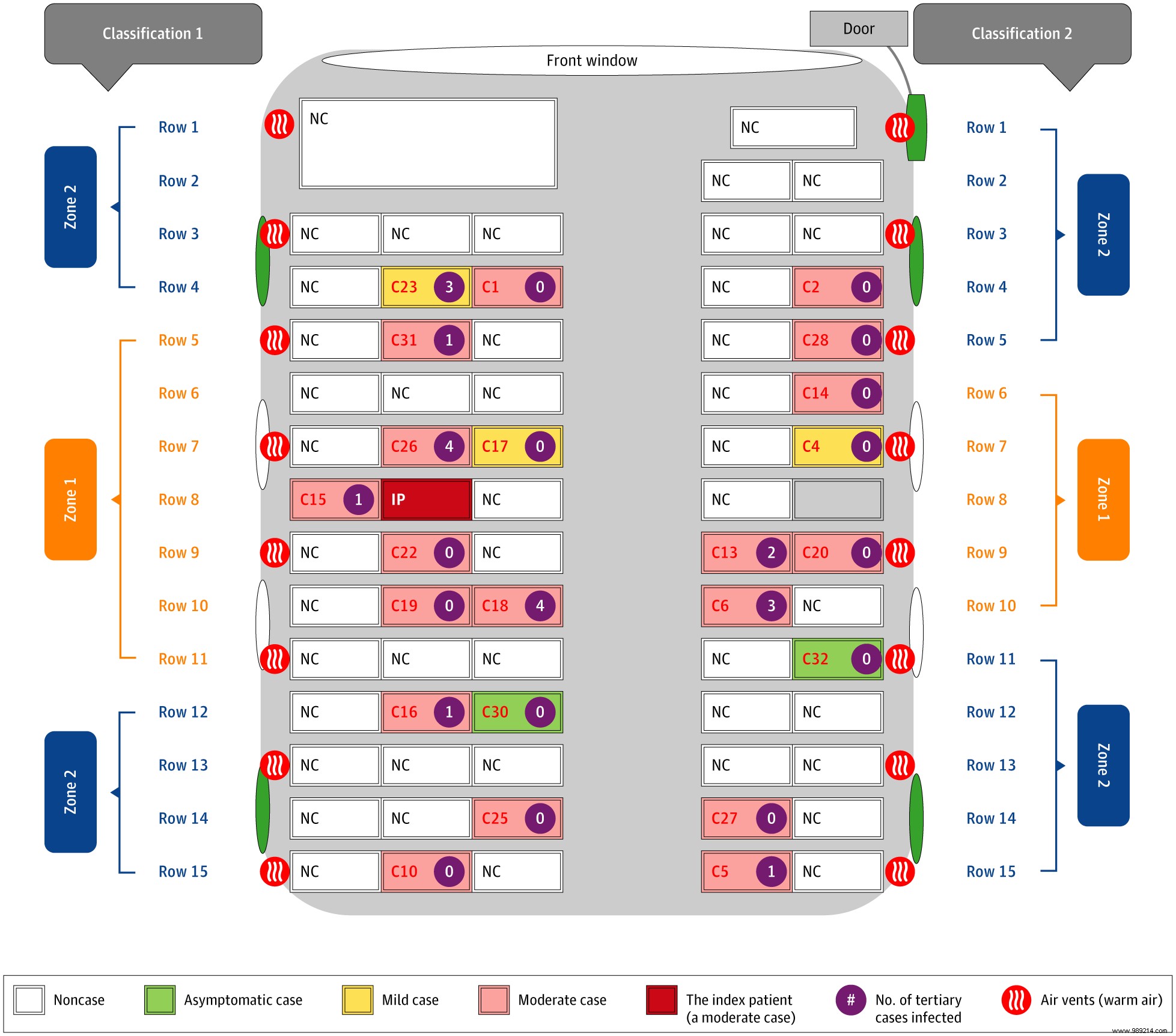The thesis of aerial transmission continues to be debated. The large droplets expelled by coughing and sneezing would not be the only ones to spread the coronavirus. Chinese researchers recently published a study on the passenger of a bus that contaminated nearly a third of the passengers.
Initially overlooked by authorities around the world, the airborne transmission thesis seems to be increasingly considered. Some respiratory virus experts have recently mentioned studies certifying the presence of viral particles in micro-droplets suspended in the air. However, these micro-droplets are ejected by simple speech.
Experts from the Chinese Centers for Disease Prevention and Control published a study in the journal JAMA Internal Medicine September 1, 2020. This research involved interviewing and testing passengers on two buses traveling to a religious event in Ningbo, Zhejiang Province. This journey, made on January 19, lasted about fifty minutes.
In one of the two buses, a person 60 years old without symptoms is certainly the case index. Indeed, she had previously had contact with residents of Wuhan, where the epidemic started. This person was seated in bus number 2, on the right side in a middle row, between two other passengers. Results ? No less than 23 travelers were infected out of a total of 68.

The study noted that the circle of infection was much larger than the rows near the index case. Indeed, people sitting in the back and front of the bus were also infected. If the coronavirus was transmitted only via large droplets, the circle of infection would have been logically smaller . The researchers speak in this case of a perimeter of only 1 or 2 meters. In addition, the index case – having no symptoms – did not cough. The researchers also explain that the bus's air conditioning system did not renew the interior air. It was content to circulate it in a loop, helping to spread the coronavirus throughout the cabin.
This case dates back to mid-January, in the middle of Chinese New Year, just before the country entered the stage of national crisis. Thus, bus passengers wore no masks . Finally, a similar survey published in March 2020 also concerned a bus passenger. It had infected 13 people during the trip, at distances between 2 and 4.5 meters.